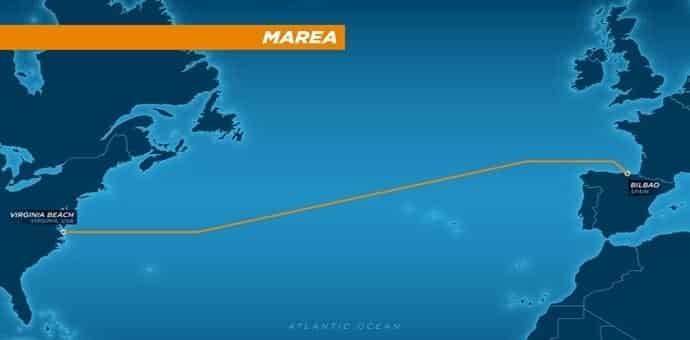Microsoft and Facebook collaborate to build MAREA, a new transatlantic submarine cable
Microsoft has just announced on its Server & Cloud Blog that it will work with Facebook to build a new, state-of-the-art subsea cable across the Atlantic. Known as “MAREA”, this new cable will help meet the increasing customer demand for high speed, reliable connections for cloud and online services for Microsoft, Facebook and their customers.
The parties have cleared conditions to go Contract-In-Force (CIF) with their plans, and the construction of the “state of the art” undersea cable system will begin in August 2016 with over 6,600 kilometers to be laid by October 2017. Frank Rey, Microsoft Director for global network acquisition described that “this marks an important new step in building the next-generation infrastructure of the Internet.”
Christian Belady, General Manager, Datacenter Strategy, Planning & Development, Microsoft Corp, said “As the world is increasingly moving toward a future based on cloud computing, Microsoft continues to invest in our cloud infrastructure to meet current and future growing global demand for our more than 200 cloud services, including Bing, Office 365, Skype, Xbox Live and the Microsoft Azure platform. The MAREA transatlantic cable we’re building with Facebook and Telxius will provide new, low-latency connectivity that will help meet the increasing demand for higher-speed capacity across the Atlantic. By building the cable along this new southern route, we will also increase the resiliency of our global network, helping ensure even greater reliability for our customers.”
Thanks to eight fiber pairs, the submarine cable system will deliver speeds going up to 160 terabits per second (Tbps). Telxius, Telefónica’s telecommunications infrastructure company, is the subsea cables expert hired to complete the project. The company will become the operator and manager of the system, and will also be able to sell internet capacity to its customers. Telefónica’s new telecommunications infrastructure company, will also be the first to connect the United States to southern Europe, from the data hub of Northern Virginia to Bilbao, Spain and then to network hubs in Europe, Africa, the Middle East and Asia. Other transatlantic cable systems already exist north of the new cable and establishing an entirely new cable will help provide “more resilient and reliable connections” for customers of the two companies.
The Microsoft Server and Cloud Platform Team, says “Microsoft and Facebook designed MAREA to be interoperable with a variety of networking equipment. This new ‘open’ design brings significant benefits for customers: lower costs and easier equipment upgrades which leads to faster growth in bandwidth rates since the system can evolve at the pace of optical technology innovation. This is critical to ensure the Microsoft Cloud continuously improves to provide the highest availability and performance our customers need for their mission-critical workloads and data”.
This cable should deliver better performance and consistency to Microsoft’s cloud services. This is becoming more and more important to the Windows-maker, as it concentrates more on that aspect of its business.
So, how does Facebook benefit from this data cable? As Facebook is the most visited site in the world, it can always use increased bandwidth. By sharing the costs and resources with Microsoft, Zuckerberg and company can relax the overall hit to the bottom line.
Najam Ahmad, Vice President of Network Engineering at Facebook, said “Facebook wants to make it possible for people to have deep connections and shared experiences with the people who matter to them most — anywhere in the world, and at any time. We’re always evaluating new technologies and systems in order to provide the best connectivity possible. By creating a vendor-agnostic design with Microsoft and Telxius, we can choose the hardware and software that best serves the system and ultimately increase the pace of innovation. We want to do more of these projects in this manner — allowing us to move fast with more collaboration. We think this is how most subsea cable systems will be built in the future.”

